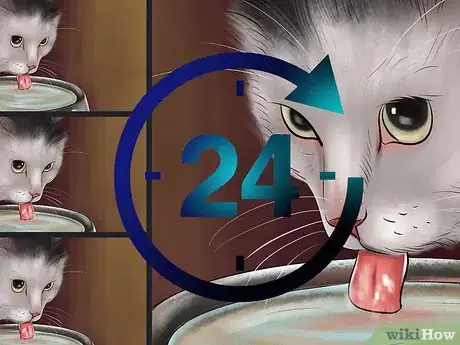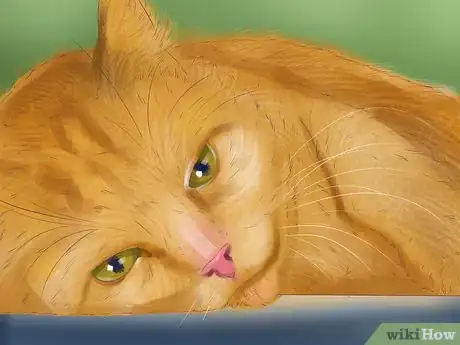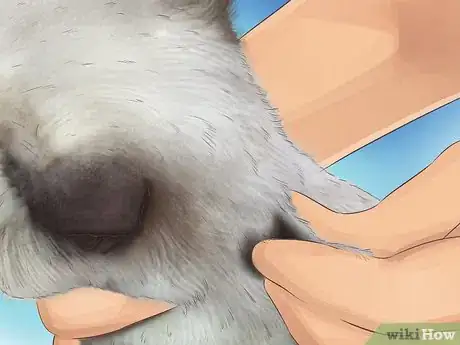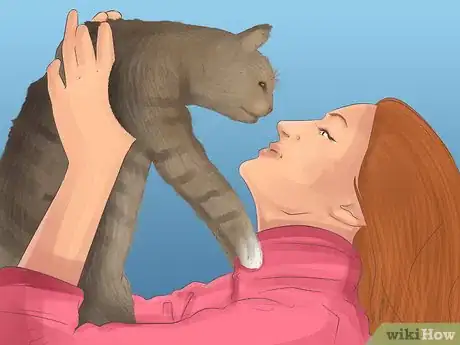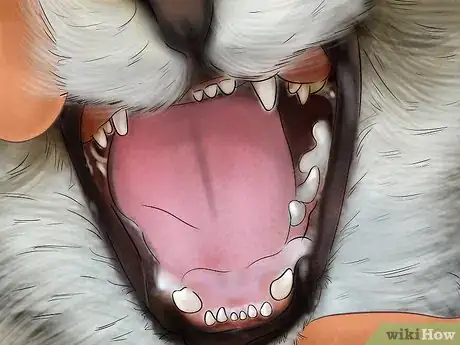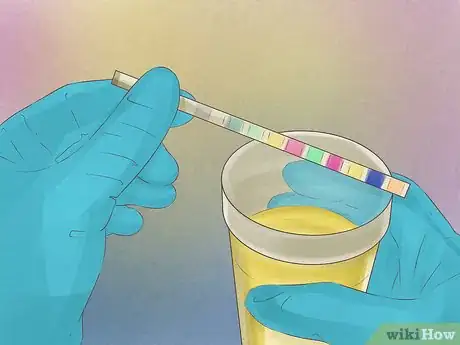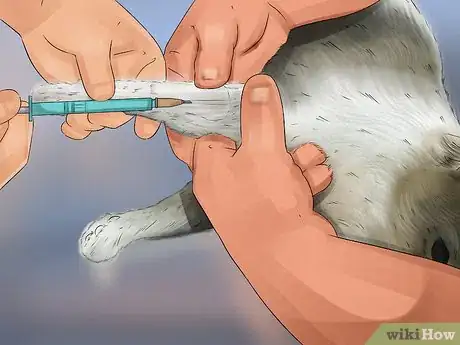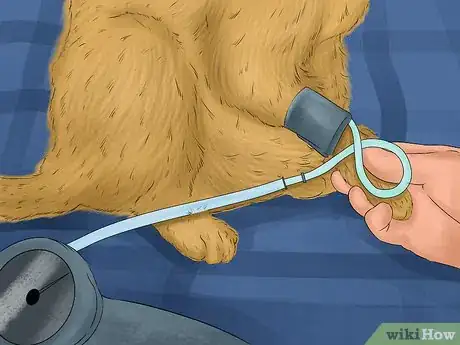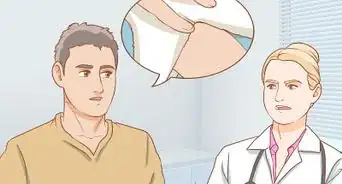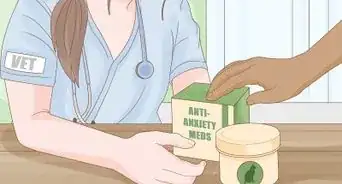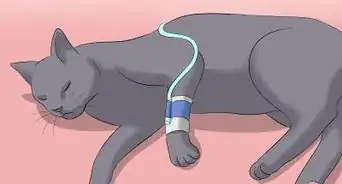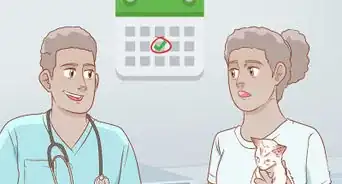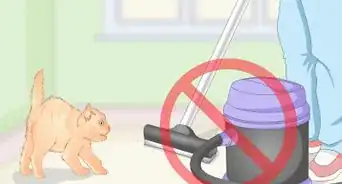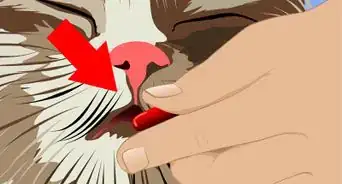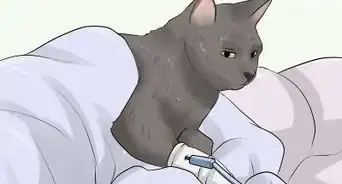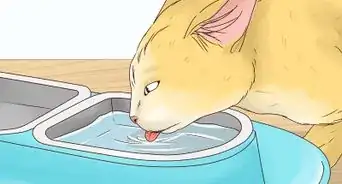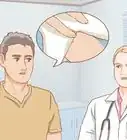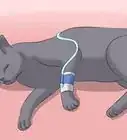This article was co-authored by Lauren Baker, DVM, PhD. Dr. Lauren Baker is a Veterinarian and Assistant Scientist at the University of Wisconsin-Madison. With over 10 years in veterinary medicine, she specializes in the concept of “one health,” which uses insights from veterinary medicine to help human medical research. She holds a Ph.D. in Comparative Biomedical Sciences, a Doctor of Veterinary Medicine, an MS in Comparative Biomedical Sciences, and a Bachelor’s degree in Psychology from the University of Wisconsin-Madison.
This article has been viewed 36,405 times.
Chronic kidney disease is, unfortunately, a health problem for many cats. While there is no way to completely stop this illness, its progression can be slowed down if it’s caught early enough. If your cat has become lethargic or has lost interest in food, go ahead and reach out to your vet. They might order blood and urine tests to develop an accurate diagnosis. Then, you can work together to develop a treatment plan to improve your cat’s quality of life.
Steps
Recognizing Signs of Kidney Issues
-
1Monitor your cat’s drinking habits. Check the level of your cat’s water bowl at the start of each day. See if your cat has started to drink more water on a daily basis. You can also tell if your cat’s water intake has increased by watching to see if you are cleaning out more wet litter than normal. Most cats are very efficient at processing water and don’t require very much of it, so increased urinating and drinking can be a sign of kidney problems.[1]
- When a cat has kidney disease, they lose more water when they urinate, so they need to drink more water to compensate. This is because the kidneys struggle to concentrate urine and conserve water in the blood.
- Cats who eat wet food will need even less water than cats who eat dry food. They will get some of their water directly out of the wet food. That’s one reason why wet food is generally best if you suspect kidney issues.
-
2Watch for vomit or disinterest in food. If your cat refuses to eat, it’s possible that it is trying to avoid stomach pain. Uremia is a painful inflammation of the stomach that can result from kidney issues. A cat suffering from uremia will likely have a reduced appetite and may even vomit blood if ulcers have developed.
- Uremia develops, in part, because the kidneys no longer efficiently remove toxins from your cat’s blood.
Advertisement -
3Notice if your cat’s fur is matted or unpleasant smelling. If your cat has developed sore gums or ulcers due to kidney issues, then it will likely not want to clean its fur. Your cat might even stopping grooming itself entirely. As a result, your cat’s fur may look dull or unclean in appearance.
-
4Take note if your cat seems consistently lethargic. Most cats love to sleep. So, the important thing here is to notice if your cat sleeps more than normal or lacks interest in games that it previously enjoyed. If your cat lacks energy, it’s possible that it has developed anemia or has low potassium levels due to kidney problems. The buildup of waste may also make your cat feel unwell.
- A diseased kidney can contribute to blood problems by no longer supporting the regeneration of blood cells in your cat’s body, being unable to conserve electrolytes like potassium, and being unable to remove toxic waste from the body.
- Another sign of kidney-related anemia is if your cat’s eyelids are dull or white in color instead of a healthy pink.
Performing Home Checks for Kidney Issues
-
1Perform a tent test to check your cat for dehydration. Kidney disease can lead to dehydration in your cat. Check for this by grabbing your cat's scruff and pulling it up slightly. Then let go. If the scruff drops back quickly, it is a sign your cat is hydrated and healthy. If the scruff drops back slowly or stays tented, they may be dehydrated.[2]
-
2Interact with your cat to see how they are feeling. It can sometimes be difficult to tell if your cat is just resting or if they really don't feel well. Try interacting with your cat by seeing if they will come to you or play. If they struggle with that, see if they will lift their head or respond to your voice. If your cat has a dull look in its eyes or seems unable to interact with you, this could be a sign of kidney disease.[3]
- Your cat's head is very heavy compared to the rest of its body and requires a lot of muscular effort to hold it up. Cats with low potassium levels typically hang their heads.
- However, it should be said that this is a rare sign, and if absent, doesn’t mean your cat does not have renal disease.
-
3Check your cat’s mouth for ulcers. If your cat’s kidneys are not cleansing toxins from its body, then ulcers may appear both inside your cat’s stomach and on its throat and mouth. Use both hands to gently hold your cat’s head and slowly open its mouth. Peer inside and make note of any red, irritated areas. Ulcers may also appear as white or gray dots. They may also appear along the gums and under the tongue.
- You may also notice that your cat’s breath smells due to gum ulcers.
Seeking Medical Diagnosis
-
1Request a urine test from your vet. If you suspect kidney issues in our cat, a urine test is likely the first thing your vet will do. For this test, they will take a urine sample from your cat in the office and run labs to look for the specific gravity of the urine to see how diluted it is.
- Using the same urine sample, your vet will likely test for other issues, such as diabetes mellitus.
- A further urine test called a urine protein creatinine ratio (UPC) helps distinguish diluted urine that is due to renal disease from other causes, such as behaviorally driven thirst.
-
2Schedule a blood test for your cat to rule out other conditions. A blood test will not always indicate that your cat’s kidneys are malfunctioning. However, a blood test can help to narrow down the cause of your cat’s health problems by eliminating other possibilities, such as diabetes or ongoing infection.
- A series of blood tests can also be used to monitor ongoing kidney issues or to check that other kidney-related health issues, such as anemia, do not develop.
-
3Have your vet check your cat’s blood pressure regularly. Your cat’s blood pressure will likely escalate as its kidney problems worsen. If your vet checks your cat’s blood pressure every 1-2 weeks, then you will have a baseline to compare any changes to. Most vets will allow you to come in for a quick blood pressure check without a formal appointment.
- Monitoring your cat’s blood pressure is important because, if left unchecked and untreated, it can cause serious side effects, such as blindness. There are medications that your vet can prescribe to lower your cat’s blood pressure, if needed.
-
4Talk to your vet about having a kidney biopsy done. If your vet is concerned that your cat is showing signs of kidney failure due to cancer, then they may suggest surgery to take a biopsy or sample of your cat’s kidney. Make sure to discuss this procedure thoroughly with your vet, as it will require that your cat be put under general anesthesia.[4]
Warnings
- It’s important that you act quickly if you suspect that your cat has kidney problems. Contact your vet immediately to get an accurate diagnosis and treatment plan.⧼thumbs_response⧽
References
- ↑ http://www.catster.com/lifestyle/cats-drinking-problems
- ↑ http://www.peteducation.com/article.cfm?c=2+2116&aid=1161
- ↑ https://www2.vet.cornell.edu/departments-centers-and-institutes/cornell-feline-health-center/health-information/feline-health-topics/chronic-kidney-disease
- ↑ https://www.dvm360.com/view/renal-biopsies-what-are-some-benefits-and-risks
About This Article
To know if your cat has kidney issues, look for common symptoms, such as increased water drinking or urinating, which can lead to dehydration. In order to confirm dehydration, pinch your cat’s scruff to see if it takes several minutes to drop back, which is a sign its dehydrated. You should also watch for vomiting or a general disinterest in food, which may indicate your cat is trying to avoid pain. If your cat’s fur looks dull or smells bad, note this as another potential symptom, since sore gums caused by kidney issues may prevent it from cleaning itself. When you think your cat has a kidney issue, take it to your vet right away so they can take a urine sample and make a diagnosis. For tips from our Veterinary co-author, including how to treat your cat’s kidney issues, keep reading!
